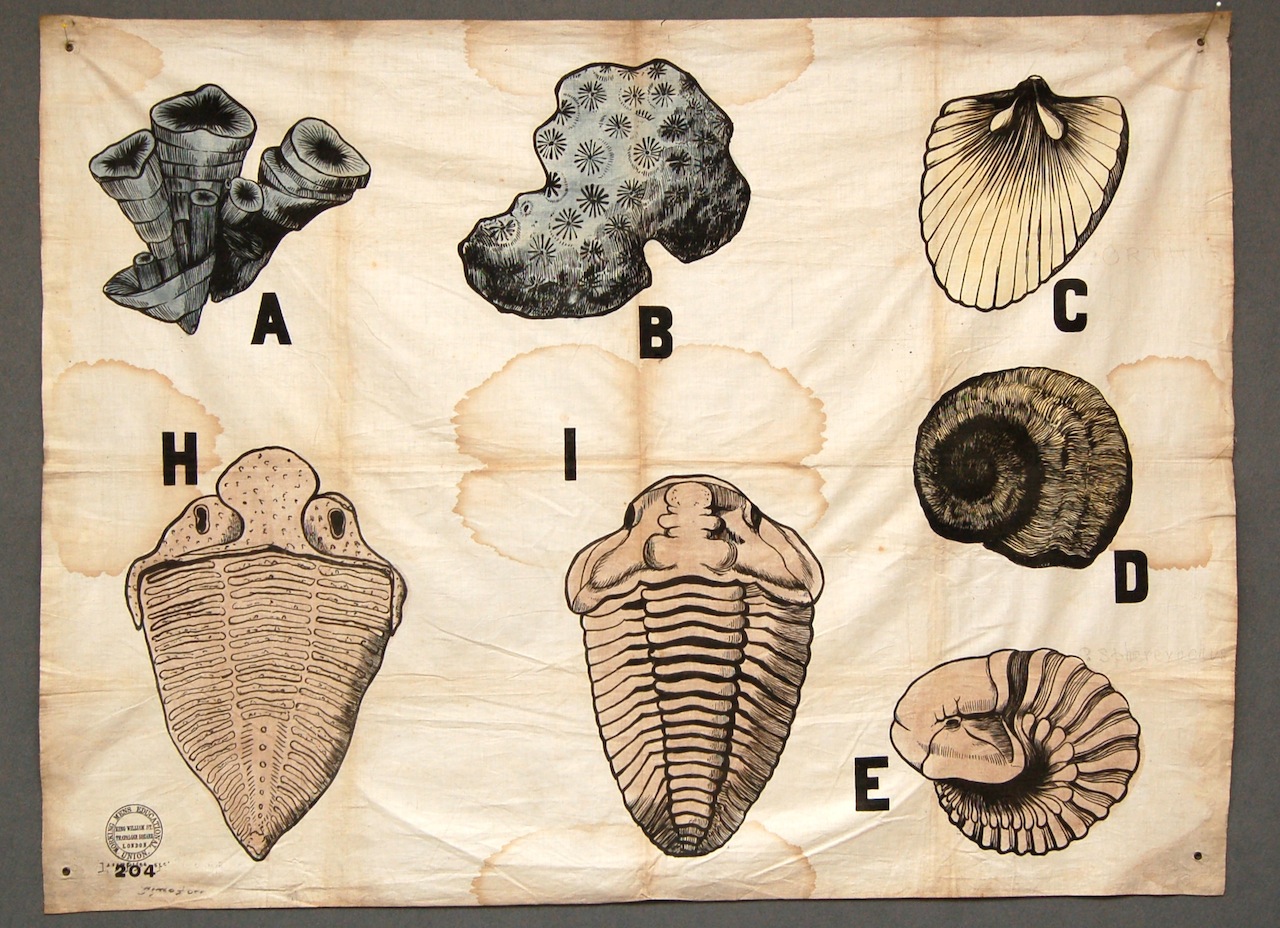



The Working Men's Educational Union, King William Street, London, was a philanthropic society founded in 1853 to provide education to the working classes. This hanging or diagrams would have been used in their lectures, held at various locations, to illustrate the latest advances in knowledge.
Educational Union coloured lithograph printed on cotton, the lower left hand corner stamped Working Men's Educational Union. King William St, Trafalgar Square, London and 204 with a variiety of fossils, labelled A,B,C,D,E,H,I , hand coloured in pale blue, palest lemon and soft brown, each corner with a brass eyelet, the reverse written in ink Paleo.......... Trilabites etc. + Corals 2 ft 3 in x 3ft 10 in or 89 x 118 cm wide
As you should be able to see from the photo this has got some large water staining to five places. The motifs could be cut out and reapplied.
They were printed on cotton to avoid paper duty and also presumably because it made them re usable. The First (Third, Fourth) Annual Report of the Working Men’s Educational Union is in the British Museum. It lists officers, contributors, members and proceedings at the annual meeting and keys to the diagrams published.There first annual report (1853) lists a coloured cotton wall hanging 109 as 'Lord Rosse's Great Reflecting Telescope, at Parsonstown, Ireland'. and was one of a series of hangings depicting telescopes and their optical principles. At each corner is a brass eyelet. The number 109 is printed in the lower left hand corner below a stamp for the Working Men's Educational Union, King William Street, Trafalgar Square, London. The Trades Union Congress library told me that they have a book entitled "A History of the Working Men's College,1854-1954" by J. F. C. Harrison (1954)which documents the history of the London Working Men's College but does not appear to mention the Union at King William Street, although this may have been a venue for some of the classes prior to the establishment of the Working Men's College in 1854.
Cindy Howells, Collections Manager (Palaeontology) at the National Museum of Wales kindly gave me the following information: The early fossil collectors, such as Mary Anning, Conybeare, Buckland, Hawkings etc were doing their 'thing' mainly from about 1810 up to the end of that century when it tailed off a little. Although many types of these are known about today, those pictured here are the ones first known about and are classics of the early part of the Jurassic Age (around 200-180 million years ago). The one with the long neck is a Plesiosaur and the others are Ichthyosaurs. In fact the single skull looks fairly similar to one in the Natural History Museum collected by Mary Anning. In fact a trip there to see the famous fossil reptile wall should be of benefit to your research. Most of these were collected from Lyme Regis (Dorset), or Somerset, or some from South Wales.
All images and text © meg-andrews.com 2021